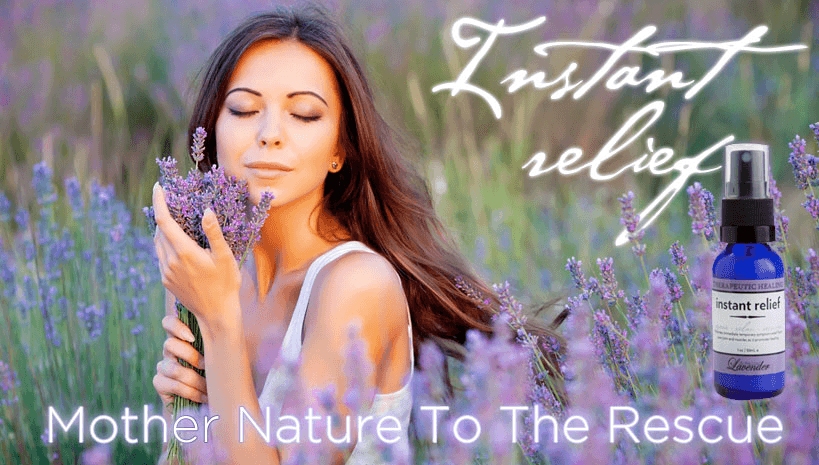
100% pure essential oil. Distilled lavandula x. intermedia hybrid.
One of the most fundamental and versatile essential oils used in aromatherapy lavender calms, refreshes and invigorates. It eases tiredness, stress, insomnia and depression. When used as a massage oil, it helps treat high blood pressure and relieves muscular and joint pains.
This aromatic plant also has natural antiseptic and astringent properties that can smooth sunburns, bites, infections and other minor skin problems when applied. Lavender benefits all skin types.
Our Lavender is harvested by hand at the peak of bloom for maximum color and most importantly oil quality! We use only the flower or 'buds' and not the whole plant as most commercial processes do.
Essential Oil of Lavender
Lavender Essential Oil Profile
Origin: Paso Robles, California USA Method:Steam Distilled (copper distiller) Characteristics:
The oil is a colorless to pale yellow liquid with a sweet, floral-herbaceous scent and balsamic-woody undertone. It is used as a fixative in perfumery and blends well with most essential oils.
Principal Constituents: These are naturally occurring in the essential oil.
- linalyl acetate
- linalol
- lavandulol
- lavandulyl acetate
- terpineol
- cineol
- limonene
- ocimene
- caryophyllene
General Actions: Antiseptic, Antimicrobial, Neurological
Analgesic, anticonvulsive, antidepressant, antirheumatic, antispasmodic, antitoxic, carminative, cholagogue, choleretic, cicatrizant, cytophylactic, deodorant, diuretic, emmenagogue, hypotensive, insecticide, parasiticide, rubefacient, sedative, stimulant, sudorific, tonic, vermifuge, vulnerary.
Safety:
Generally non-toxic, non-irritant, nonsensitizing.
Primary Therapy Agent:
Burns, headache, migraine, insomnia.
Secondary Therapy Agent:
Wrinkles, mature skin.
How to Take It:
Pediatric
* Oral use in children is not recommended.
* May be used topically undiluted concentrations to treat skin infections and injuries, such as minor cuts and scrapes. DO NOT USE ON OPEN WOUNDS – seek medical attention. A small study published in the New England Journal of Medicine in 2007, however, concluded that lavender and tea oils in some shampoos, soaps, and lotions may cause gynecomastia, breast development in male, in boys.
* May be used as aromatherapy for children. Use 2 – 4 drops in 2 – 3 cups of boiling water. Inhale vapors for headache, depression, or insomnia.
Adult
The following are recommended adult doses for lavender:
* Internal use: Tea: 1 – 2 tsp whole herb per cup of hot water. Steep for 10 – 15 minutes and drink, 1 – 3 times a day.
* Tincture: (1: 4): 20 – 40 drops, 3 times a day.
* Inhalation: 2 – 4 drops in 2 – 3 cups of boiling water. Inhale vapors for headache, depression, or insomnia.
* Topical external application: lavender oil is one of the few oils that can be safely applied undiluted. for ease of application, add 1 – 4 drops per tablespoon of base oil ( such as almond or olive oil ). DO NOT USE LAVENDER OIL INTERNALLY. Also, avoid contact with the eyes or mucous membranes such as the lips and nostrils.
Precautions:
The use of herbs is a time-honored approach to strengthening the body and treating disease. Herbs, however contain active components that can trigger side effects and interact with other herbs, supplements, or medications. for these reasons, herbs should be taken with care, under the supervision of a health care provider qualified in the field of botanical medicine.
Although side effects are rare, some individuals may develop an allergic reaction to lavender. Nausea, vomiting, headache, and chills have also been reported in some individuals following inhalation or absorption of lavender through the skin.
Pregnant and breast-feeding women should avoid using lavender.
Possible Interactions:
* CNS Depressants – there are no known scientific reports of interactions between lavender and conventional medications. However, due to the relaxing qualities of lavender, this herb could potentially enhance the effects of central nervous system depressants, including narcotics ( such as morphine or oxycodone ) for pain and sedative and anti-anxiety agents ( such as lorazepam, diazpam, and alprazolam). talk to your health care provider before using lavender with these and other sedating medications.
Important Note: The information on localhost:8888 is only provided for educational purposes, and further research should be done on each essential oil to be assured of its proper usage for each individual. Aromatherapy is not meant to be a replacement for care under a qualified health professional, but should be considered a complimentary modality.










